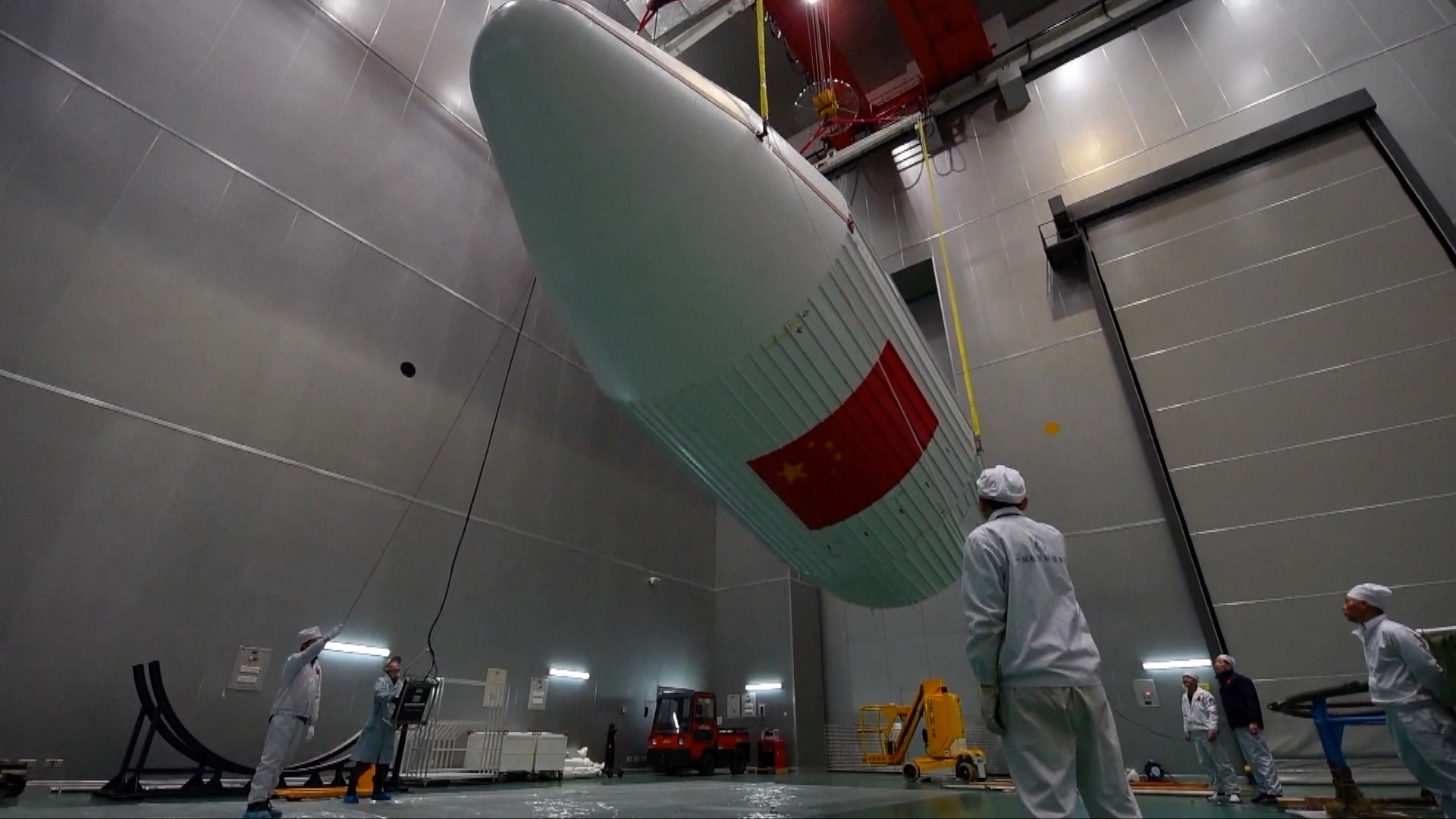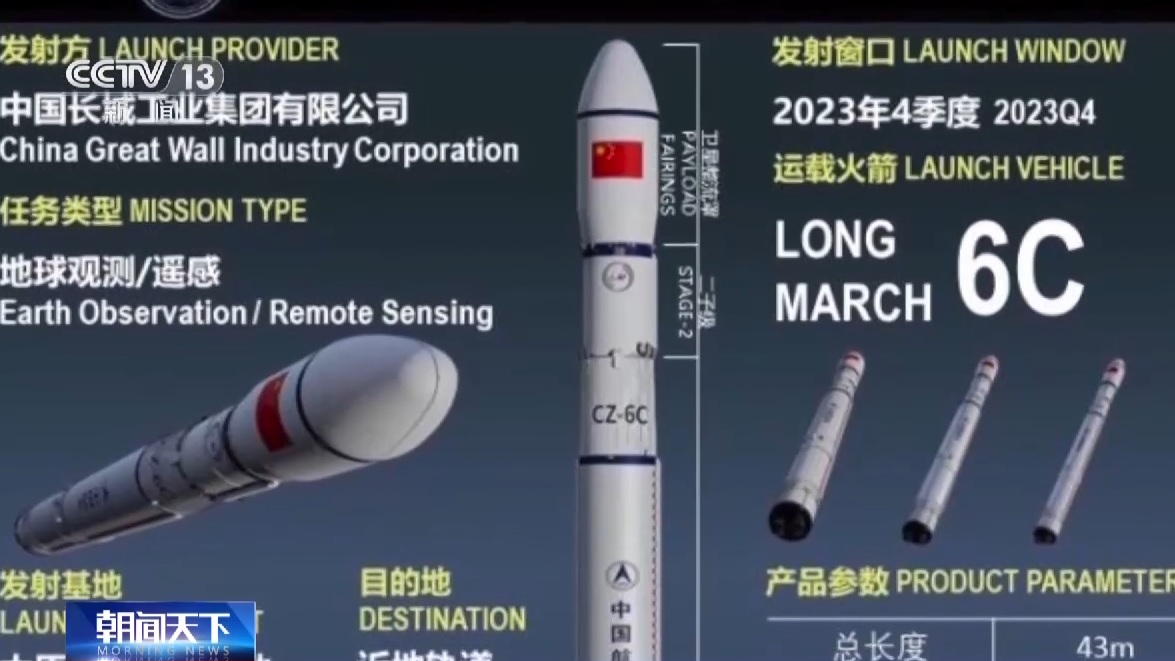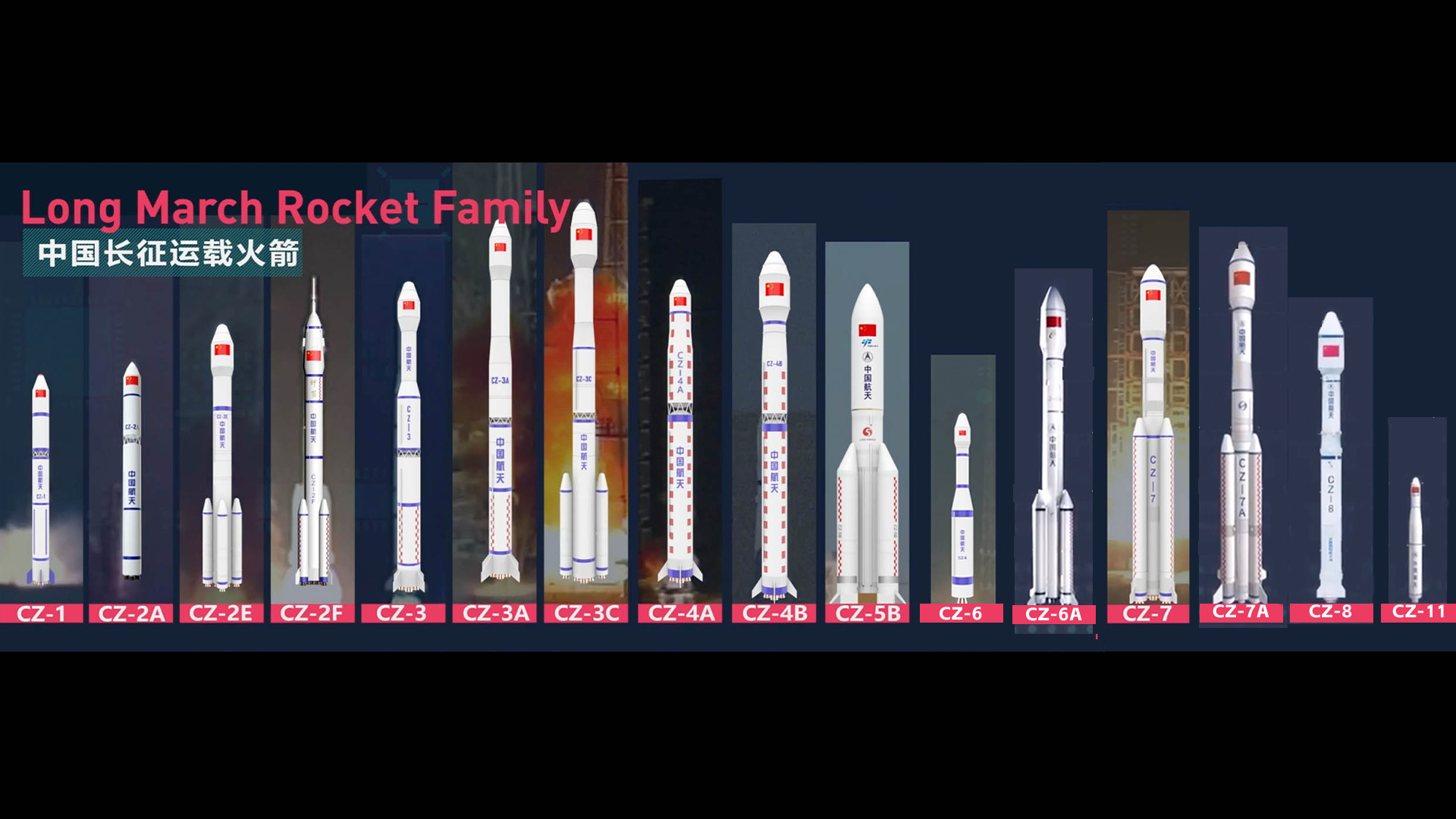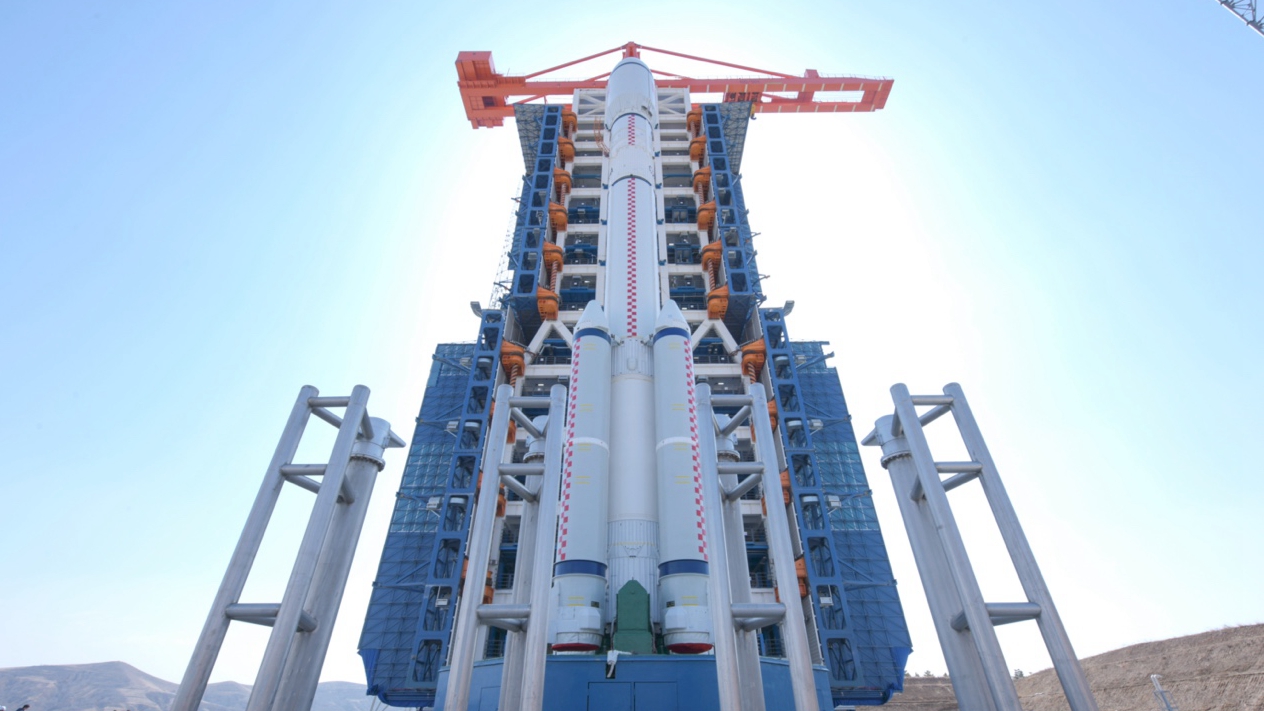00:52

China will open access to its Long March rocket to Chinese commercial satellites for the first time via an open auction system on July 13, in a move experts believe will reduce the cost of commercial access to space and boost high demand for space applications.
The auction, which is set to commence at 3:00 p.m. on Thursday, will see several commercial companies bid for their satellites to "ride along" on a Long March rocket, entering space in a system just like carpooling.
The bidding will start at 80,000 yuan (around $11,078) per kilogram, and the China Aerospace Science and Technology Corporation (CASC) will handle the information and transactions related to the auctioned rocket launch service.
"We will screen the qualifications of the applicant enterprises, including their experience and use for space to ensure that the final products launched into space will contribute to the space industry," said Zhang Peng, general manager of China Great Wall Industry Corporation under CASC.
Zhang also mentioned that "we will conduct a pre-release online for the launch cycle, including the capacity of the launch. We will also carry out data docking with, for example, the Beijing Stock Exchange to realize the market bidding mechanism through auctions."

Information about the open auction for commercial satellite access to the Long March-6 carrier rocket developed by the Shanghai Academy of Spaceflight Technology, a China Aerospace Science and Technology Corporation subsidiary. /CMG
Information about the open auction for commercial satellite access to the Long March-6 carrier rocket developed by the Shanghai Academy of Spaceflight Technology, a China Aerospace Science and Technology Corporation subsidiary. /CMG
An insider said the platform serves 150,000 aerospace-related enterprises and that there are various auctions every day, but it will be the first time it holds an auction of this nature.
The rocket participating in the auction is the Long March-6 carrier rocket developed by the Shanghai Academy of Spaceflight Technology, a CASC subsidiary.
The Long March-6 is a two-stage liquid-fueled carrier rocket that uses liquid oxygen and kerosene as a propellant and is mainly used for launches into low-earth and sun-synchronous orbit. It is expected to be launched by the end of 2023.

CGTN graphics of the Long March rocket family. /Li Wenyi and Jia Jieqiong (Source: China Science Communication)
CGTN graphics of the Long March rocket family. /Li Wenyi and Jia Jieqiong (Source: China Science Communication)
Sharing rockets: a new low cost, high demand model
Rockets have reduced the cost of commercial spaceflight via the "carpooling" launch mode, and this cost reduction has promoted an increase in demand for commercial spaceflight applications.
Under the joint efforts of the supply and demand sides, commercial aerospace has seen rapid development.
Driven by the high demand for space launches, China's commercial aerospace technology innovation capabilities have steadily improved in recent years.
Significant breakthroughs have been made in sending multiple satellites with one rocket, recyclable rockets and low-cost small satellites.
Currently, led by the CASC and the China Aerospace Science and Industry Corporation (CASIC), a pattern of extensive participation of state-owned and private enterprises in various sub-sectors has taken shape.
Constellation projects such as the Tianmu-1 and Jilin-1 have steadily advanced, with commercial aerospace companies launching their own space networking plans.
As of 2022, more than 400 commercial aerospace companies operate in China.
The Long March-8 rocket is a new type of carrier rocket developed by CASC to meet the needs of commercial space launch. It is designed for the international commercial space launch market and is expected to fill a gap in launch capabilities for low- and medium-orbit satellites to sun-synchronous orbit (SSO) and geosynchronous transfer orbits.
With a recyclable design, a future variant of Long March-8 can be reusable and thereby significantly reduce costs and shorten the launch cycle.
The launcher was developed using China's new-generation cryogenic rocket engine filled with green liquid propellant and is of modular design. It uses non-toxic propellants made of liquid hydrogen and liquid oxygen, which generate water after combustion, ensuring the launch process is environmentally friendly and efficient.
It can fill the gap in China's capability to launch vehicles in sun-synchronous orbit satellites and meet the launch needs of resource satellites, scientific test satellites and other commercial space launches.
The rocket made its debut flight on December 22, 2020. However, the team has had no satellites to launch since then.
"The Long March-8 Yao-I carrier rocket does not have a clear payload and mission, and there is nothing to launch. [So,] we decided on this mode of sharing, and went to the market to find the payload," Xiao Yun, commander-in-chief of the Long March-8 rocket at the CASC, told CMG. "Simply put, it is a "carpooling" program, putting a lot of small satellites together to achieve this mission."
After countless repeated communications, it decided that seven satellite manufacturers will jointly complete the Long March-8 mission.
In February 2022, the Long March 8 Yao-2 carrier rocket was launched from the Wenchang Space Launch Site, carrying 22 different satellites per rocket, setting a record for China by sending multiple satellites per rocket and becoming the prototype for the current national and commercial satellite payload launch "carpooling" program.
"It was very difficult, but it also made us see that the market has great potential. According to the number of users that can be shared in the market, shared launches can be realized, so this creates a new model," Xiao explained.

China's first hybrid carrier rocket, the Long March-6A. /CGTN
China's first hybrid carrier rocket, the Long March-6A. /CGTN
Commercial rockets with more flexibility
With the continuous development of civil satellite technology in China, "sharing rockets" began to gain popularity for sending more small satellites to meet the growing demand for commercial launches and provide lower costs and more flexible launch methods.
The CASC released an inventory of launch services this April that includes carrying services and shared services in 2023 and 2024.
In addition to the Long March series launch service, there are altogether nine launch services that are open to international and domestic markets, providing different launch services for international and domestic markets, including "piggy-back" and "packet" launches.
Ding Jie from the China Great Wall Industry Corporation told CMG that China specifically encouraged private enterprises to develop commercial spaceflight in an outline in 2015.
Since then, domestic commercial spaceflight has been growing at a rapid rate of 20 percent every year, with products ranging from rocket launches and satellite research and development to satellite application, Ding said.
In the first half of 2023, the commercial space industry continued to maintain rapid growth, with successive successful launches of solid-propellant carrier rockets, such as Kuaizhou and the successful maiden flight of the liquid-fueled carrier rocket Tianlong-2.
Currently, more than 350 Chinese commercial space satellites have been put into orbit, serving the national economy and people's livelihood.
Zhao Xiaolong, chairman of the China Commercial Space Alliance, told CMG that the commercial aerospace industry is ushering in a historic opportunity for development.
"This will greatly improve the ability to obtain commercial remote sensing data and the level of application services, and the commercial aerospace will inject stronger impetus into the construction of a space power," Zhao said.